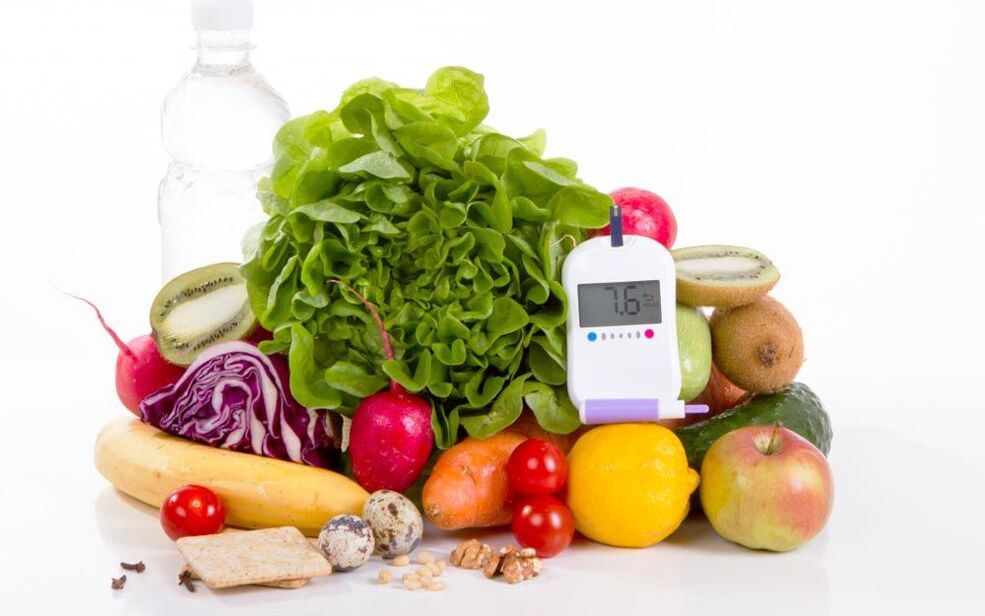
Diabetes mellitus is a common disease that probably every adult has heard of. It can be congenital or acquired during life, but in any case it is chronic and cannot be completely cured. Many have heard that diabetes is not a disease but a way of life. After all, the patient should be on a special diet for life and use individually selected drugs, not always insulin injections. In general, diabetes can not be considered a diet in the broadest sense of the word, because it does not have so many restrictions and most banned products can be replaced with similar taste properties, but safe for the sensitive body of a diabetic.
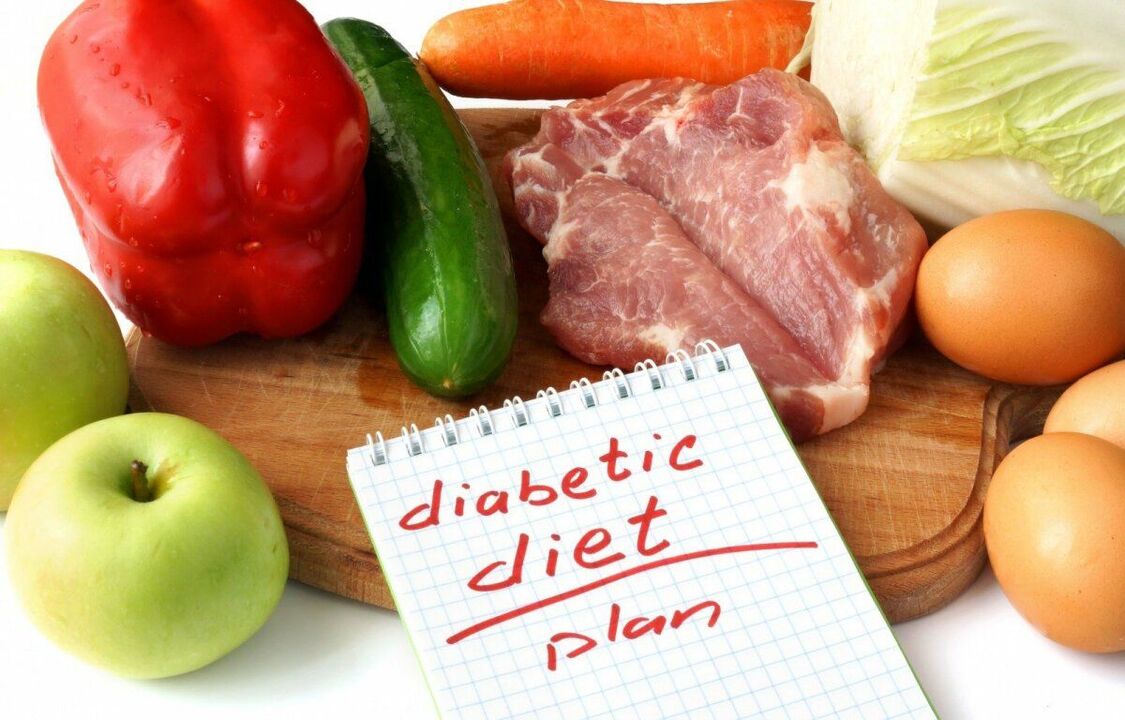
What is diabetes and its types
Diabetes mellitus is a chronic disease in which there is a disorder of glucose metabolism. This may be due to a reduction in the amount of insulin hormone produced by the cells of the pancreas, then type 1 diabetes (insulin dependent) is diagnosed or it results from regular overeating leading to obesity, severe stress and other factors, then diabetes develops. type 2 (non-insulin dependent).
Insulin is a biologically active substance released into the blood that captures the glucose molecule and transports it to the desired cells.
Today, type 2 diabetes is the most commonly diagnosed today and requires more attention from doctors, as well as adherence to special principles of nutrition, as it becomes a consequence of the unhealthy lifestyle that a person leads. With regular intake of large amounts of carbohydrates in the body, the pancreas works to wear out and eventually either stops working or produces "damaged" insulin that cells and tissues do not absorb. This means that such insulin is not in the body. able to capture glucose and transport it to its destination because the cells "do not see" it, ie it develops insensitivity to it. Last but not least, the changes in the hormonal background that inevitably occur with age play a role in this.
In both cases there will be a sharp increase in the concentration of glucose (sugar) in the blood and the development of characteristic symptoms:
- increased thirst;
- dry mouth;
- weakness;
- deterioration of vision;
- increased appetite, etc.
Type 2 diabetes is diagnosed most often, namely in 85-90% of patients. It usually appears after 40 years and especially often after 65 years. Such susceptibility of the elderly to the development of disorders of carbohydrate metabolism is a consequence of reduced physical activity and decreased muscle mass, which is the main consumer of glucose, and increasingly observed abdominal obesity is becoming an additional factor that increases the riskfrom the development of non-insulin dependent diabetes.
Abdominal obesity is the predominant deposition of fat in the abdomen.
Diagnosing diabetes is not difficult. For this, a blood sugar test is done. Obtaining elevated indicators serves as a reason for further research and selection of optimal treatment tactics, one of the mandatory components of which is nutritional correction.
Why it is important to follow basic nutritional principles
With each type of diabetes, the blood sugar level rises, but the cells still cannot get it due to insulin deficiency or the development of insulin resistance. Because glucose is a monosaccharide that is a product of the breakdown of carbohydrates, it acts as a major source of energy in the body. Therefore, if the tissues do not receive it in sufficient quantities, they experience hunger, which due to the transmission of the corresponding nerve impulses in the brain leads to the appearance of a similar feeling in humans. Therefore, in diabetes, patients may feel like eating something, especially sweet, even an hour after a hearty meal.
As a result, patients openly overeat high-calorie carbohydrate foods, which in type 2 diabetes rapidly leads to weight gain and obesity progression. This leads to an even greater jump in blood glucose levels, an increase in the load on the pancreas, an increase in insulin production, an increase in tissue resistance to it, a worsening of the condition, ie the formation of a vicious circle.
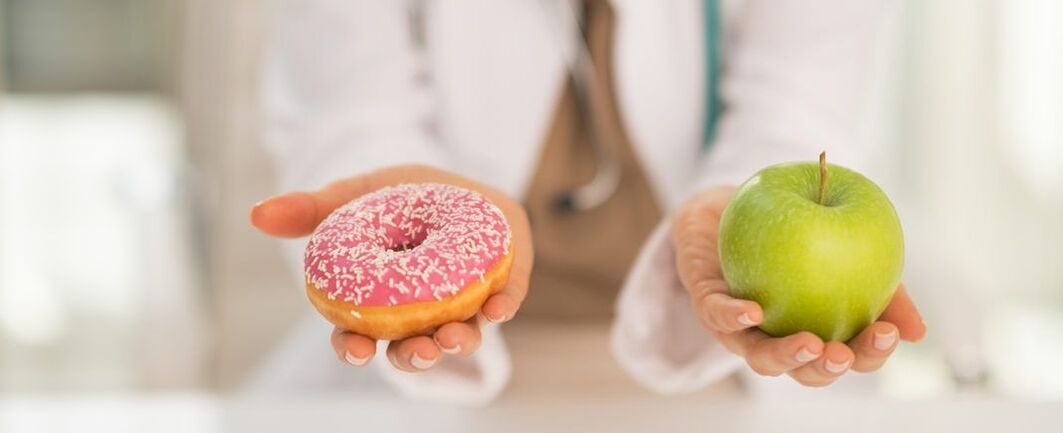
In such situations, if you do not intervene in time and disrupt this cycle, high sugar levels (hyperglycemia) will lead to the development of ketoacidosis and diabetic coma. Initially, the patient will feel a strong thirst and will often go to the toilet, then will quickly join weakness, shortness of breath, there will be a characteristic odor of acetone from the mouth and urine, nausea and vomiting will occur. In the absence of competent medical care, confusion and eventually diabetic coma will occur.
In addition, long-term uncontrolled diabetes mellitus (decompensated) can lead to the development of:
- retinal lesions with subsequent irreversible blindness;
- impaired renal function and chronic renal failure;
- poorly healing trophic ulcers of the legs, very difficult to treat;
- osteoporosis fraught with the possibility of fracture of the skeletal bones, including the spine, even with a light stroke;
- disorders of the heart and blood vessels, organs of the digestive tract, etc.
That is why it is important not only to diagnose diabetes in time and to take the medication prescribed by the endocrinologist, but also to strictly follow the recommendations regarding nutrition.
Dietary characteristics
The diet for type 1 and type 2 diabetes has some differences that patients need to understand. With regard to diet for insulin-dependent diabetes, in which patients receive lifelong replacement therapy in the form of regular insulin injections, physicians in different countries are considering the need to limit simple carbohydrates in different ways.
Foreign endocrinologists believe that it is not necessary to reduce the amount of their consumption in type 1 diabetes with properly selected insulin therapy. Home doctors believe that this is fraught with side effects and insist on the need to limit the consumption of simple carbohydrates, but not to give them up completely, as in non-insulin-dependent diabetes. In type 2 diabetes, such disputes are inappropriate, as it can lead to terrible consequences for the use of sugar, which is not in doubt in any country.
In addition, people with type 1 diabetes should be able to count units of bread (XE), and people with type 2 diabetes should be able to determine the glycemic index (GI). Nutrition should be structured in such a way that these indicators of the daily diet correspond to the developed norms.
Therefore, today with diabetes, patients are prescribed the so-called diet No. 9 in various modifications, the differences between which are insignificant. Which table is most appropriate for a particular patient is determined by the endocrinologist, based on the results of tests and the human condition.
In general, the diet № 9 is designed in such a way as to normalize carbohydrate metabolism by reducing the amount of simple carbohydrates consumed and thus reducing blood glucose levels. As a result, it is possible to normalize the amount of sugar in the blood, to prevent the development of possible disorders of fat metabolism and complications of the disease.
Diet No. 9 implies complete rejection of simple carbohydrates against the background of daily consumption of no more than 300 g of complex carbohydrates, while maintaining the amount of protein foods within the physiological norm.
Basic nutritional principles
In the case of diabetes of any type, the following recommendations should be followed:
- the food must certainly be partial and consist of at least 5 meals, especially with insulin-dependent form;
- breakfast is a mandatory meal;
- when compiling the menu you must adhere to the physiological ratio of protein (meat, fish dishes, dairy products), carbohydrates (cereals, bread) and vegetables, they must represent respectively 25%, 25% and 50%;
- nutritional preference is always given to foods with low glycemic index and high percentage of plant fiber;
- every meal starts with vegetables and the protein stays at the very end;
- the amount of salt should not exceed 5 g per day;
- fasting for diabetes is prohibited, if necessary, to lose weight, this is done by increasing physical activity;
- when choosing a method of cooking vegetables, it is recommended to give preference to the minimum heat treatment or to completely abandon it, cooking, roasting and steaming are ideal;
- A vegetarian diet for diabetes is not the best choice, although it helps to improve the course of the disease and increase insulin sensitivity, you can switch to it only with the permission of an endocrinologist.
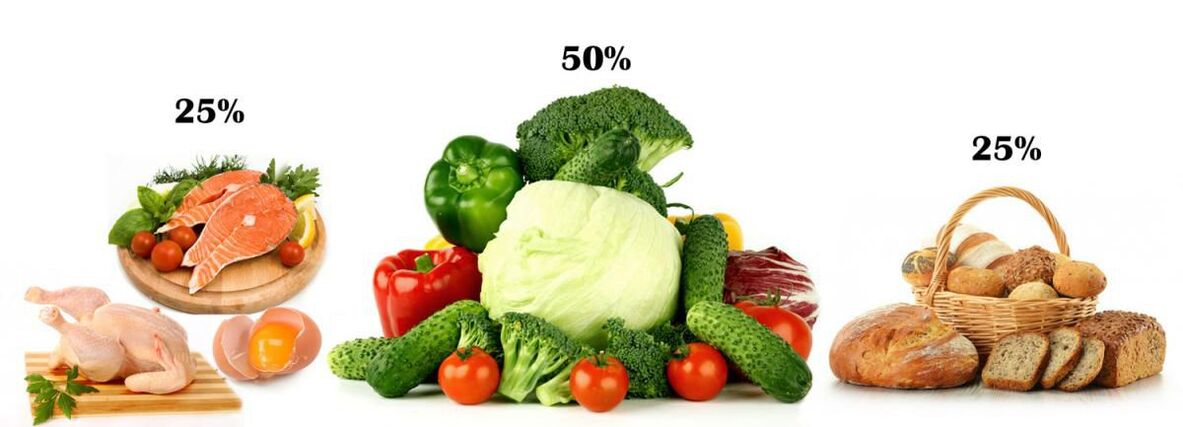
Nutrition in type 1 diabetes
Insulin-dependent diabetes is usually diagnosed in childhood. As the reason for its development is the destruction of pancreatic cells that synthesize insulin, patients should be prescribed insulin therapy, and the drug and dosage are chosen individually. Insulin injections completely cover the deficiency in hormone production in the body, so no significant dietary restrictions are required, but the child's parents, and then the child himself, must learn to correctly calculate the amount of carbohydrates consumed so that it corresponds to the appliedinsulin dose. For this purpose, specially created tables indicating the number of so-called grain units in each product.
In type 1 diabetes it is necessary to give up only:
- all sweet drinks, including juices;
- prepared cereals;
- sweets.
You can eat no more than 7 XE per meal and up to 25 XE per day. In this case, sum the amount of all carbohydrates eaten per serving volume. For example, 2 XE is contained in 3 tablespoons of ready-made pasta, 4 tablespoons of rice, 14 tablespoons of legumes or 420 g of tomatoes.
1 XE is equal to 12 g of carbohydrates or 20 g of bread.
Sweets are not strictly forbidden, but only those who control blood glucose levels several times a day can afford them, they count exactly XE and can independently adjust the dose of insulin administered.
In severe type 1 diabetes, patients are prescribed diet No. 9b and high doses of insulin. It involves the use of 400-450 g of carbohydrates and is very close to the diet of most modern people. It is allowed to consume 20-30 g of sugar per day.
The endocrinologist who monitors the patient's condition will definitely tell you how to distribute the amount of food between the different doses, depending on the type of medicine he has prescribed. So, with the introduction of insulin twice a day (morning and afternoon), it is necessary to compile the menu so that almost 2/3 of the total daily carbohydrate intake falls on this time. In addition, after each injection, you should eat 2 times - 15 minutes after the injection and 3 hours after. Fractional nutrition and XE control is the basis of the diet in type 1 diabetes.
If the patient suddenly feels weak after the injection, this indicates a lack of glucose in the body. In such situations you should immediately eat a piece of dark chocolate.
Thus, in the case of the insulin-dependent form of the disease, the main difficulty lies in the need to control not the type of food but its volume and to count the units of bread.
Nutrition in type 2 diabetes
In most cases, obesity is the main cause of the disease. Therefore, diet in type 2 diabetes is the first and main component of the treatment and prevention of complications. With its help it will be possible to normalize sugar levels and control weight, thus preventing the appearance of unwanted changes and deterioration of the condition.
All patients should monitor their blood glucose levels daily using household glucometers, and if stable high levels are obtained, consult a physician immediately.
If the patient is diagnosed with a non-insulin-dependent form of the disease with a mild or moderate degree and his weight is within normal limits, he is prescribed the basic diet No. 9 with a daily caloric intake of up to 2500 kcal. In such situations, you can consume no more than 275-300 g of complex carbohydrates from various sources per day.
In the presence of obesity, it is required not only to maintain glucose levels within normal limits, but also to reduce weight, as its excess adversely affects the effectiveness of treatment and the well-being of patients. Therefore, in such cases, patients are prescribed the so-called reduced diet No. 9, which is characterized by reduced calorie content due to even greater limitation of the allowable amount of complex carbohydrates consumed daily. In this case, the endocrinologist calculates this percentage individually based on the degree of obesity. Therefore, in different cases, patients may be allowed to consume 100 to 225 g of carbohydrates, and the total caloric intake should not exceed 1700 kcal per day.
What is not allowed
Thus, in type 2 diabetes, it is necessary to completely exclude from the diet foods containing so-called fast carbohydrates, ie those that are broken down into glucose and absorbed into the blood within 15 minutes. They give a surge of energy quickly, but do not create a feeling of satiety, so once you eat them, hunger returns very quickly. They include:
- sugar;
- honey;
- confectionery, classic pastries;
- ice cream, chocolate;
- marmalade, jam, jam, canned food;
- sweet vegetables, fruits, berries (grapes, bananas, dates, pineapple, persimmon, dried fruits);
- white bread, bread;
- semolina;
- smoked meats, fatty dishes;
- mayonnaise;
- fast food, snacks.
Special recipes, including approved baking products, have been created for diabetics.
Diet number 9 does not require complete rejection, but recommends a maximum reduction in the amount consumed:
- potatoes;
- beets;
- corn;
- carrots;
- soy products;
- pastry;
- bread.
If you are obese, you will have to completely abandon all high-fat foods:
- oil and vegetable oil, spreads;
- sour cream, greasy cheeses, cottage cheese, sour cream;
- lard, fatty meat and fish, chicken skin;
- nuts, seeds;
- alcohol, etc.
In such situations, it is recommended to replace these products with vegetables that have a beneficial effect on carbohydrate metabolism. These are leafy vegetables, eggplants, cucumbers, turnips, cauliflower, pumpkin, zucchini, radishes and more.
It is imperative to try to completely abandon foods high in fat, especially canned foods, meat products, storage sauces. They are replaced by boiled or stewed dietary meat (chicken, rabbit, turkey, low-fat yogurt without additives).
What can
Carbohydrates are an indispensable part of the daily diet and they should be present in the menu for diabetes, but only in acceptable amounts. Patients are allowed to eat only foods with slow-digesting carbohydrates and high fiber content. That:
- vegetables;
- wholemeal bread with bran;
- whole grain cereals (8-10 tablespoons), except refined rice.
Because sugar in any form is banned for diabetics, its glucose-free substitutes are specially formulated. Many of them are many times sweeter than sugar and can be used in minimal quantities. Modern sweeteners include xylitol, stevia, sorbitol, fructose. But studies show that some of them can have a negative effect on the body. Today, stevia is considered the safest substitute for sugar. It is obtained from natural raw materials and sweetly surpasses sugar by 10-30 times (depending on the form of release: herbal powder or extract called stevioside).

It is important for patients to know the glycemic index of foods. Today there are special tables that help you navigate the choice and correctly calculate the allowable consumption rate. In diabetes, preference should be given to foods with a GI of less than 55 (apples, cucumbers, cherries, broccoli, lettuce, milk, cauliflower, etc. ). They break down slowly and lead to little or no increase in blood sugar levels. Such products can be consumed up to 200 g during one meal, but preferably together with a protein food.
Heat treatment increases GI.
It is allowed to use:
- potatoes (not more than 200 g per day);
- meat and vegetable broth dishes;
- lean meat and fish (chicken, turkey, pollock, pike, hake);
- lentils;
- low-fat fermented milk and milk products, cheeses with a fat content of less than 30%;
- eggs (3-4 per week, but not more than 1 per day);
- vegetable oil (not more than 1 tablespoon per liter);
- special sweets, waffles, bread for diabetics.
When making homemade compotes, sweeteners are added to them instead of sugar.
Nutrition in gestational diabetes
Pregnant women with a genetic predisposition to the development of diabetes can face the development of so-called gestational diabetes at 20-24 weeks. Occurs against the background of hereditary reduced tissue sensitivity to inulin, enhanced by hormones produced during pregnancy in increased amounts: estrogen, prolactin, cortisol. They are able to block insulin and cause a rise in blood sugar.
Often after birth, carbohydrate metabolism gradually returns to normal as the hormonal background returns to normal. However, if the basic principles of nutrition and diet are not followed, there is not only a risk of diabetes mellitus, but also the development of complications that can lead to premature birth, maternal pyelonephritis, fundus pathologies, and complications. during childbirth. In order to detect gestational diabetes during pregnancy, blood sugar tests are performed regularly and if hyperglycemia is detected, a diet is prescribed.
In such situations, women are advised to:
- completely exclude from the diet simple carbohydrates (the same sugar, confectionery, chocolate, pastries, white and black bread, bananas, grapes, juices, dried fruits, etc. );
- limit the intake of complex carbohydrates to the amounts recommended by your doctor;
- takes most of the daily diet for vegetables, unsweetened fruits;
- refuse to eat fatty foods, fried foods, semi-finished products, a variety of sausages, smoked products;
- when choosing a method of cooking products, give preference to baking, stewing, steaming;
- eat partially, preferably every 2 hours, emphasizing 3 main dishes (breakfast, lunch and dinner), as well as 2 additional (second breakfast, afternoon breakfast);
- drink at least 1, 5 liters of water.
Pregnant women with gestational diabetes are advised to measure their blood sugar after each meal.
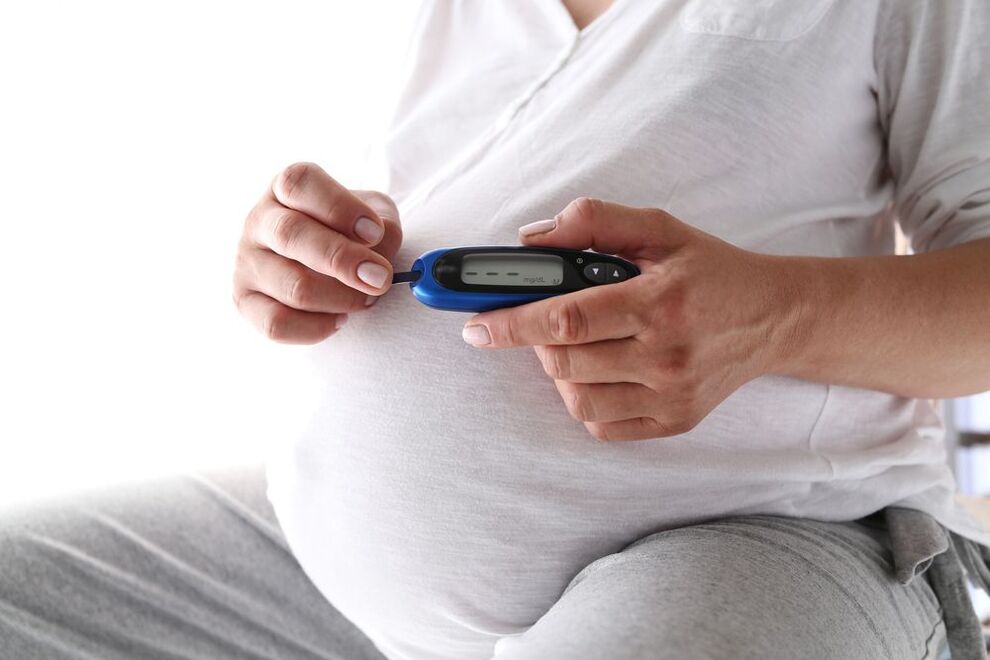
All these recommendations are relevant for the postpartum period. In any case, during the first months of the baby's life, the breastfeeding woman is forced to sit on a hypoallergenic diet and refuse fried, fatty foods. The same diet will help to eliminate gestational diabetes and avoid its transition to a chronic violation of carbohydrate metabolism within 2-3 months after birth. If after this period of time the blood sugar level does not return to normal, the woman should consult an endocrinologist to study and develop treatment tactics.
Sugar lowering products
There are a number of foods that can help lower blood glucose levels. They are called hypoglycaemic and are recommended for patients with diabetes. But because each person is a unique biological system and has individual characteristics, he can react to certain types of food in his own way, and not just give allergic reactions. Therefore, although glucose-lowering foods can be an invaluable aid to patients with diabetes, especially type 2 diabetes, it is worth consulting an endocrinologist before starting their daily use.
So, sugar-lowering foods include:
- Cherries (GI 22) - contains anthocyanin, which helps lower blood sugar and blood pressure and eliminate so-called bad cholesterol. The daily norm is 100 g.
- Grapefruit (GI 29) - Contains naringin, a powerful antioxidant that helps increase insulin sensitivity in tissues. It is recommended to consume 1 medium-sized grapefruit or freshly squeezed juice per day (commercially unsuitable). But grapefruit can adversely affect the quality of absorption of various drugs, so it is necessary to consult with your doctor before including it in the menu.
- Cinnamon is a source of polyphenols that help control blood sugar levels. The daily norm is 1/2 teaspoon. It can be added to cottage cheese, oatmeal and is very suitable for making stews with apples.
- Broccoli is a valuable source of fiber, which is so useful for diabetes, and the substances contained in it help to slow down the rate of absorption of sugar in the intestine. The daily norm is 200 g.
- Blueberries are one of the healthiest foods for diabetics because they contain valuable glycosides, tannins, anthocyanins, which help maintain normal glucose levels and reduce the risk of developing diabetic retinal damage. The daily norm is 200 g.
- Oatmeal and millet porridge are high in fiber, which helps maintain sugar levels.
- Jerusalem artichoke is a natural source of insulin, so its use contributes to the normalization of glucose levels, and the presence of fructose in the composition provides a pleasant sweet taste, which allows it to be used raw or added to salads.
- Garlic is one of the healthiest foods for everyone, as it contains many antioxidants, natural antibacterial and other substances. Its use makes the pancreas work more actively, which is very valuable for patients with type 1 diabetes.
- Fish - it is shown that diabetic fish eat at least 2 times a week and if possible try to replace meat dishes with it. Helps to normalize sugar levels, as well as to obtain essential polyunsaturated fatty acids.
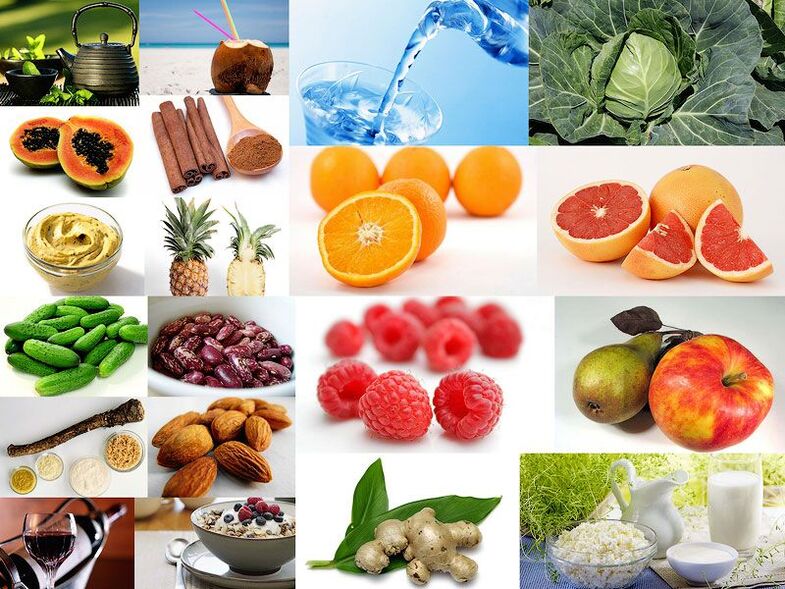
In this way, the diet for diabetes can be varied and tasty. With a competent approach to menu planning, this will not cause rejection, but, on the contrary, will help to increase energy and efficiency, as it largely meets the principles of a balanced diet. But remember that in diabetes, it is important to maintain a normal level of physical activity, as exercise increases tissue sensitivity to insulin.



































